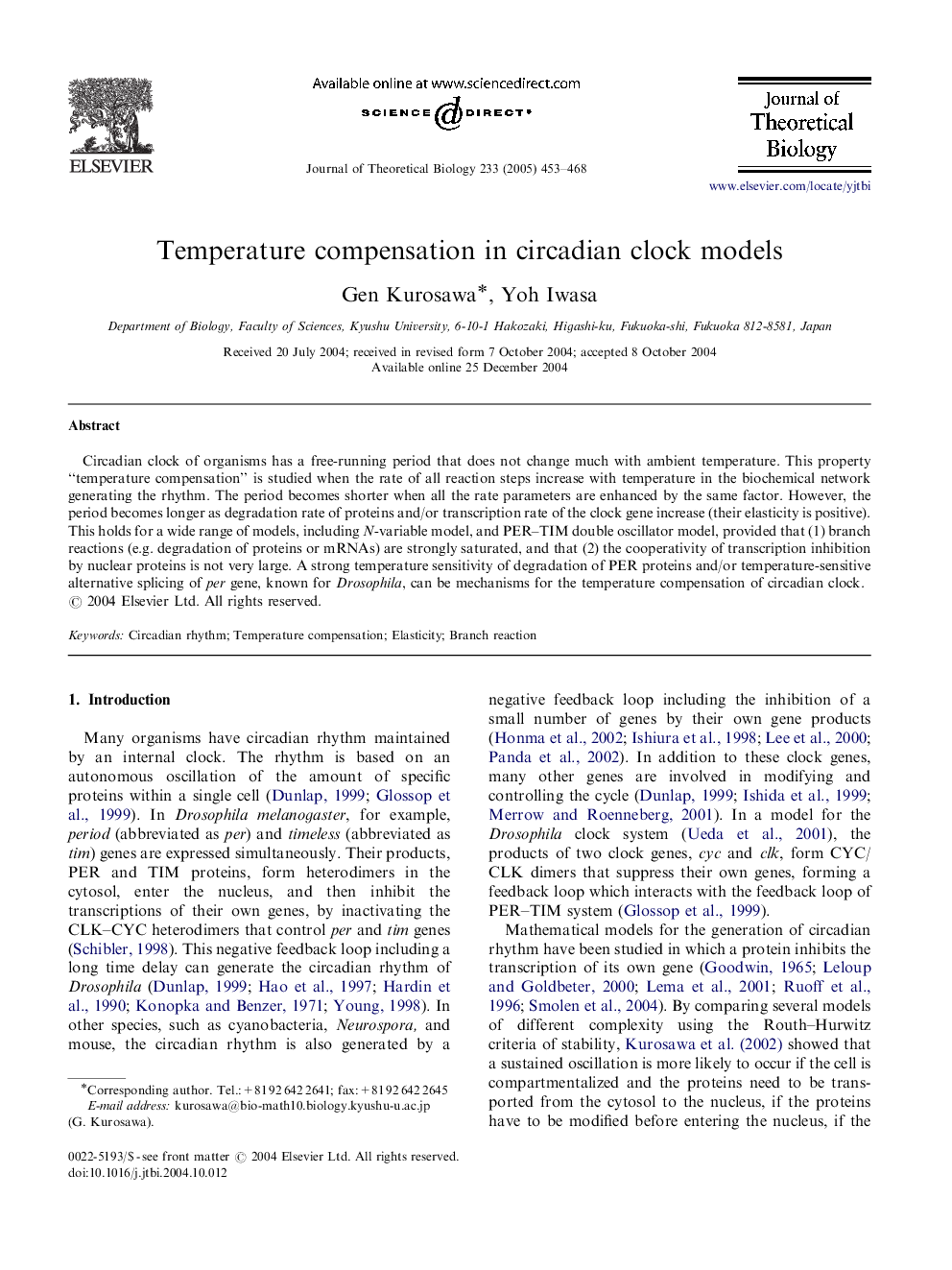| کد مقاله | کد نشریه | سال انتشار | مقاله انگلیسی | نسخه تمام متن |
|---|---|---|---|---|
| 9469874 | 1319070 | 2005 | 16 صفحه PDF | دانلود رایگان |
عنوان انگلیسی مقاله ISI
Temperature compensation in circadian clock models
دانلود مقاله + سفارش ترجمه
دانلود مقاله ISI انگلیسی
رایگان برای ایرانیان
کلمات کلیدی
موضوعات مرتبط
علوم زیستی و بیوفناوری
علوم کشاورزی و بیولوژیک
علوم کشاورزی و بیولوژیک (عمومی)
پیش نمایش صفحه اول مقاله

چکیده انگلیسی
Circadian clock of organisms has a free-running period that does not change much with ambient temperature. This property “temperature compensation” is studied when the rate of all reaction steps increase with temperature in the biochemical network generating the rhythm. The period becomes shorter when all the rate parameters are enhanced by the same factor. However, the period becomes longer as degradation rate of proteins and/or transcription rate of the clock gene increase (their elasticity is positive). This holds for a wide range of models, including N-variable model, and PER-TIM double oscillator model, provided that (1) branch reactions (e.g. degradation of proteins or mRNAs) are strongly saturated, and that (2) the cooperativity of transcription inhibition by nuclear proteins is not very large. A strong temperature sensitivity of degradation of PER proteins and/or temperature-sensitive alternative splicing of per gene, known for Drosophila, can be mechanisms for the temperature compensation of circadian clock.
ناشر
Database: Elsevier - ScienceDirect (ساینس دایرکت)
Journal: Journal of Theoretical Biology - Volume 233, Issue 4, 21 April 2005, Pages 453-468
Journal: Journal of Theoretical Biology - Volume 233, Issue 4, 21 April 2005, Pages 453-468
نویسندگان
Gen Kurosawa, Yoh Iwasa,